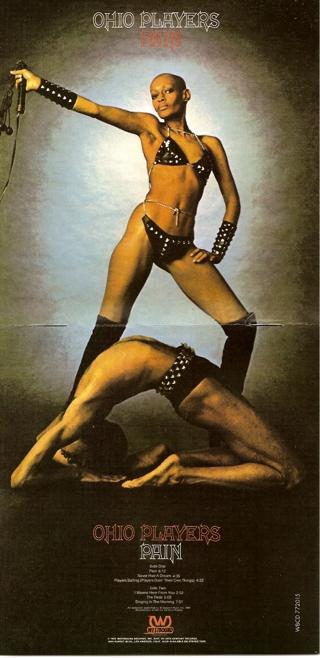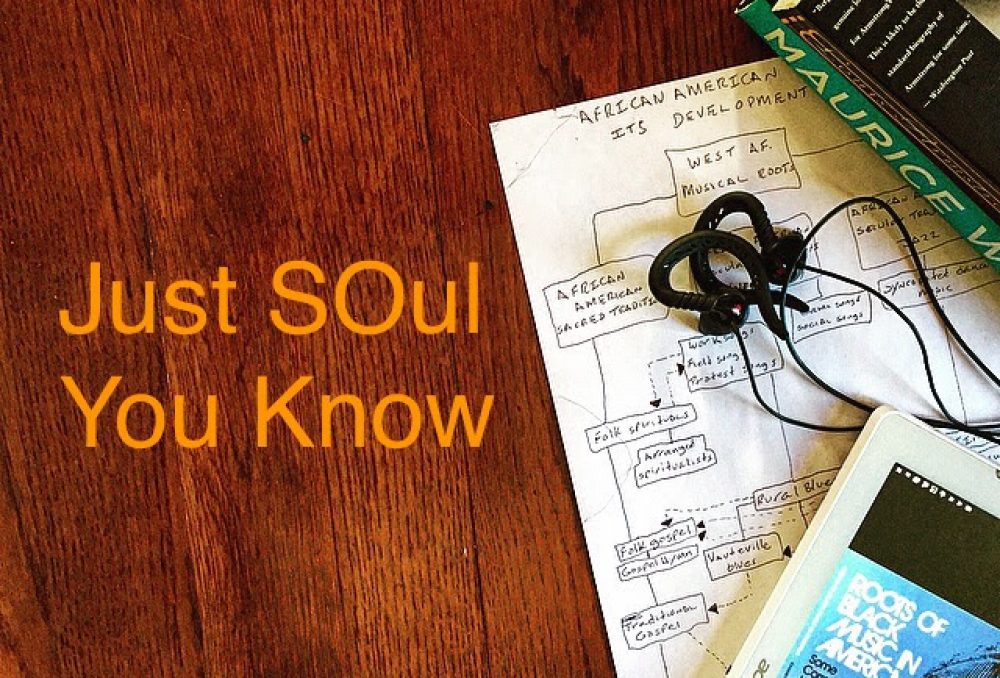As the saying goes, “a picture is worth a thousand words,” which rings true on closer examination. Many of us have certainly seen pictures worth a thousand words and more. That being said, how many words are the images on an album cover worth?
Album covers are meant to give the listening audience a visual clue or insight to the recorded work of the artist. The images; some simple, some complex in their composition, speak volumes through hyperbole, metaphor, and double entendre images. Given the decade, album covers made very specific social, cultural, and political commentary that spoke directly to the listening audience of that era. No era was more prolific in relaying social, cultural, and political messages to a listening audience than the 70s.
The 70s followed the decade of social and political turbulence led by radicals, poets, and misfits who fought for and achieved real cultural change in all aspects in American life including music. Simple photos of artists on their album covers were now passé. The 70s demanded more! Album covers had to say something else besides “look at us/me” (the artist). The era required thought-provoking, emotional, bewildering, career defining, and indeed controversial album covers. The Ohio Players stepped up to the plate.
The Ohio Players was (and still is) a funk and R&B band from Dayton Ohio who famously crooned about a funky worm, skin-tight britches, fire, sweet sticky thangs, and a love roller coaster. Their album covers in the 70s are now legendary. They constantly make the top 10 Internet list for the best album covers of the 70s and easily top the sexiest album cover lists of all time. As you will see in this post, Ohio players featured a sexy and scantily clad woman on all of their albums in the 70s. How many words are their album covers worth? Thousands!!!
Considering the era of the 70s, the Ohio Players’ album covers were more than just gratuitous sexy-women. The band was engaging in the social, cultural, and political issues of the day. Ohio Players were, in terms of album cover imagery, in lock step with the climate of the times.
The 70s ushered in a new and bold vision of blackness. As the black urban community jettisoned out of the 60s, musical spokesperson and ‘soul brotha #1’ James Brown shouted out a new manifesto suited for a new conscious people: “I’m Black and I’m Proud,” and we were. The new vision of Blackness was righteous, cool, smart, and “sho nuff” beautiful. The Ohio Players helped to create the musical soundtrack of this era. Their music communicated the sentiment of the new definition of blackness. Ohio Players sonically created that familiar black 70s swag. Moreover, their album covers echoed black romance and the beauty of the black body–a women’s body.
In deliberate synchronicity with Blaxploitation films, their album covers exuded the new 70s black woman. Gone was the imagery of the Aunt Jemima mammy and wash maids and here to stay was the self-assured, fearless, afro wearing, jumpsuit sporting, shit talking sista that could round house “The Man” in the throat, flip off the pigs, save your little brother from getting hit by a car on his Big Wheel, and lovingly kiss her man on the lips–all at the same time. This was the image of the popular black woman of the 70s and this was the woman on the album covers of the Ohio Players only a bit more sexy.

Observation In Time, 1968, Capital Records
Although not recorded in the 70s, Ohio Players first album Observations In Time was telling of future album covers to come.

Pain, 1972. This is their first album on the Westbound label.
Photographer is Joel Brodsky. Model is Pat Evans.
Photographer Joel Brodsky, was instrumental in the creation of the Ohio Players album covers. He wanted to create images of a strong black woman. In the above photo model Pat Evans is the visual personification of this and more. Not only is she dominating the man in the photo but she is also afro-less, which shows her defiant nature; this is extreme even in black culture. Her bald head is a clear sign that she will not be controlled. Think “Black Moses” Isaac Hayes.

Pleasure, 1972, Westbound
Brodsky album covers contained the “rest of the image” below or above the ‘gate-fold’ (where the album folds). The folded album would showcase the “featured” image on the cover. Then once unfolded the image would be “completed” or seen in its entirety to reveal an expanded visual commentary. Examine the above photo. Evans on the album cover is seen from mid forearm to shoulder with a facial expression that resembles the title of the album. However, once the album is unfolded she is revealed to be bound by chains. Which extends a whole new meaning to the title of the album.

Ecstasy, 1973, Westbound. This is the last Ohio Players album released while still on the Westbound label. Others albums released on Westbound are compilations of unfinished songs, extra material, and previously released hits.
Brodsky’s images depict Evans as sexy and dominant. The 70s witnessed the emergence of the black woman as sexy, exotic and erotic. Black women, in terms of their darker skin color, emerged as objects of desire and the image of beauty. Women such as Carol Speed, Gloria Hendry, Tamara Dobson, Pam Grier, and first black super model Naomi Sims were embraced for their sexuality and beauty alone.

Skin Tight, 1974 Mercury Records. First album for Mercury. Brodsky nor Evans were employed for the album cover.
Once the Ohio Players moved to Mercury Records, their album covers lost the image of strong black woman. However, the albums covers did retain the sexy, sensual, and alluring body as the object of desire and muse for the album’s music. Brodsky’s beyond the gate-fold imagery was still utilized. Mercury’s album covers pressed the sexuality of black woman, which rivaled the sexuality of white women. Black women were sexy too!

Fire, 1974, Mercury. Heated sexuality.

Climax, 1974, Westbound. This album is composed of extra tracks from their years with the label. There is much commentary below the gate-fold.
Westbound’s image on the Ohio Players Climax album is aimed at the artists. It revealed how the label felt when the group left and signed a deal with Mercury. Brodsky and Evans image (a knife in the back) below the gate-fold was controversial.

Honey, 1975, Mercury. Arguably the most famous Ohio Players album cover. Check the net for the inner sleeve.
The most popular Ohio Players album cover came complete with a urban tale of hot honey, a deathly scream, and a studio murder, which may of may not have involved the model on the cover Ester Cordet. Cordet was the first latin (Panamanian) Playboy “playmate of the month” (Miss October 1974). Her African heritage couched her and her body in the black aesthetic of beauty and sensuality.

Rattlesnake, 1975, Westbound. (Rare)
The Rattlesnake album cover contains the image of a man, woman, and snake. Evans is in a dominant position here and is in full control of the snake. The imagery is reminiscent of Adam and Eve and metaphorically Westbound takes another dig at the Ohio Players with the presence of a snake. (Members of Parliament/Funkadelic are rumored to have played the overdubs on this album of unfinished songs and re-recorded earlier releases.)

Greatest Hits, 1975, Westbound.
Ohio Players previous record label had yet another message for the band on their Greatest Hits cover. Westbound’s commentary of the Ohio Players lies above the gate-fold. Evans beauty still persists as did the Ohio Players music.

Contradiction, 1976, Mercury
The Contradiction album is indeed that. The music contradicts their musical legacy in that it is not very appealing and the horse pictured is credited rather than the model. This image is highly sexualized, which plays on the image of the the black stallion metaphor and double entendre.

Gold, 1976, Mercury
Mercury’s release of Ohio Players Gold album was a compilation of the group’s gold records and a response to Westbound’s Grates Hits both sonically and in album cover image. The model, whose look is similar to Evans, appears to be angelic-like as she flies through the air carrying Ohio Players gold record to the masses. Her nude body and red cape exude power and femininity.

Angel, 1977, Mercury
The Angel album cover represented the last of the Ohio Players respectful image of the black body. This should be of no surprise. The image of the black body was by this time in American society common and had begun to lose its exotic-ness. The black body had arrived; it was beautiful and could rival and be rivaled by any other body. In terms of beauty there was a fair amount of parity. This was reflected in the media and most powerfully seen on television in the form of black cast dramas and sitcoms of the 70s.

Mr. Mean, 1977, Mercury
The Ohio Players appearance on the Mr. Mean album cover ends a steak of not having any band member on cover since 1968. Although the image of a feminine black body is present, it is, however, stifled by the men. The model seems to be withdrawn and submissive this is far removed from the strong and controlling images of Westbound’s Brodsky/Evans covers.

Jass-Ay-Lay-Dee, 1978. Last album recorded for Mercury. No outside gate-fold.

Inside gate-fold

Everybody Up, 1979, Arista
By the end of the 70s, as seen on the Everybody Up album, the unique esthetic of black beauty had made a change. Images birthed in the Blaxploitation era have waned and the black body evolved into mere sexual object; a collection of body parts to be desired. Strong images of black women in terms of black power and feminine sexuality and attached meaning disappeared in the 80s and were reflected on not just the Ohio Players album covers but many other artists album covers as well. The era of social and cultural commentary on black body politics and honey (beauty) was over.
Want more info on the Ohio Players? Check here:
http://wfnk.com/ohioplayers/index2.html
http://www.allmusic.com/artist/the-ohio-players-p5062
More photos of Pat Evans





























